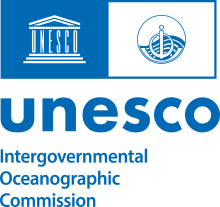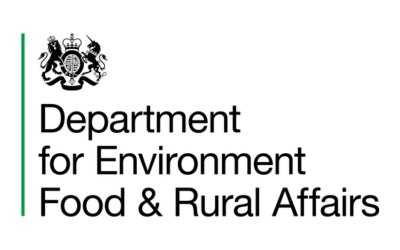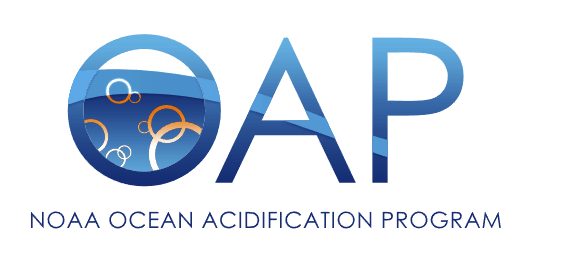OA Information for Action
Ocean Acidification Information for Action: A User Guide
WELCOME TO THE OARS COMMUNITY
Today, all life exists in a high carbon dioxide world as a result of excess atmospheric carbon dioxide created by the burning of fossil fuels. This challenges the health and wellbeing of many different species, including humans. As the ocean absorbs excess carbon dioxide, a chemical reaction occurs that makes seawater more acidified. This process is called ocean acidification (OA), and it poses a real threat to marine ecosystems and the people who rely on them.
The OA Research for Sustainability (OARS) community is a network of scientists and other ocean professionals dedicated to understanding the challenges posed by an acidifying ocean and reducing the impacts of OA.
Ocean acidification researchers produce targeted information that can help policymakers, resource managers, stakeholders, and communities better comprehend impacts of OA on marine resources, and enable them to identify the most appropriate mitigation or adaptation actions to minimize and address the effects of OA.
To empower this exchange, OARS Outcome #2 is working to synthesize and prioritize current data and research, and identify the information and tools required to inform specific decisions and actions that will deliver tangible outcomes in addressing OA.
What Role Do You Play?
OA Researchers
Ocean acidification researchers investigate how seawater chemistry is changing, what is driving these changes, and how these changes may impact coastal ecosystems, marine species, human societies, and the planet as a whole.
The data, evidence, and information provided by the OARS scientific community is the foundation for any effort to understand, manage, mitigate or adapt to the changes our ocean is experiencing.
Policymakers and Marine Resource Managers
Management of OA requires a nuanced understanding of ocean and coastal acidification and the relationships —or tradeoffs— between establishing new management tools and leveraging existing programs.
Policymakers and marine resource managers collaborate to identify and prioritize gaps in knowledge that will inform local intervention strategies and provide managers a more complete picture of local drivers, conditions, risks and solutions.
Non-Government Stakeholder Communities
Many communities around the globe are worried about the changes they are seeing in the ocean’s health because it impacts them personally. Stakeholders from all walks of life can connect over shared concerns and work together to monitor and respond to the threat of ocean acidification and the mounting climate emergency.
HOW CAN OCEAN ACIDIFICATION INFORMATION SERVE YOU?
The right OA information can help policymakers, resource managers, and community members understand the impacts of OA on marine resources and identify the most appropriate mitigation or adaptation actions to minimize and address the effect of OA.
However, achieving impactful outcomes through appropriate policy goals and management tools requires a better understanding of the data and conditions required for leveraging the correct tools to address a specific problem.
To encourage a diversity of OA actions across different scales, OARS Outcome #2 has outlined 6 key decision-making categories. These categories provide a framework for identifying your OA information needs for specific mitigation and adaptation actions.
To get started, identify the type of issue you want to address from the six categories below. Within each category, you’ll find a link to featured case studies that thoughtfully examine factors that informed a place-based priority project. Case studies also examine lessons learned, challenges and critical information gaps that both OA researchers and users of OA information can draw upon in shaping future projects.
Key decision-making categories:
1. IMPACTS OF CO2 EMISSIONS ON HUMAN AND OCEAN HEALTH AND RESOURCES
You are interested in evaluating the impacts of carbon dioxide emissions, by documenting changes that are occurring in your local environment and/or to inform the ways these changes may pose social, economic, or cultural risk to human communities who rely on impacted resources and ecosystems.
2. FOOD SECURITY AND RESILIENCE OF SEAFOOD ECONOMIES
You are interested in increasing food security and resilience of seafood economies and coastal communities by advancing understanding about the effects of OA on key seafood species and exploring adaptation strategies for aquaculture and food industries.
3. BEST APPLICATIONS OF MARINE MANAGEMENT TOOLS
You are interested in utilizing the best applications of marine management tools such as guiding targeted regulations, seasonal closures, or conservation measures, to improve sustainable ocean planning.
4. REDUCTION OF LAND-BASED POLLUTION
You are interested in advancing local remediation of cumulative impacts and adaptation strategies through reduction of land-based pollution.
5. NATURE-BASED COASTAL SOLUTIONS
You are interested in deploying blue carbon sequestration projects or increasing ecosystem resilience with marine and coastal habitats.
6. MARINE CARBON DIOXIDE REMOVAL
You are interested in assessing the potential risks, benefits, and monitoring, and evaluation needs of various marine carbon dioxide removal strategies.
Have you contributed to a project or management decision that utilizes ocean acidification research? Connect with the OARS community to share your own case study or suggest different decision-making categories that might be featured!
WHICH OA ACTIVITIES BEST SERVE YOUR NEEDS?
In every region of the world, OA research activities of all shapes and sizes are increasing or strengthening OA knowledge for specific actions in mitigation, adaptation and restoration. These activities include, but are not limited to:
UNDERSTANDING REGIONAL AND LOCAL CONDITIONS WITH QUALITY DATA, OBSERVATION STRATEGIES, AND FUTURE PREDICTIONS
Building baselines to measure coastal variability and trends in physical and chemical parameters.
Enhancing climate response and preparedness and strengthening predictive models.
Reporting global trends in ocean warming, acidification and deoxygenation, obtained by modeling, to IPCC, UN SDG 14.3.1 or other regional climate-ocean observing bodies.
ASSESSING BIOLOGICAL IMPACTS
Conducting species-specific research to determine vulnerability and adaptation potential particular for ecosystem engineers, foundation species, or species of economic or cultural importance.
Improving knowledge of biological impacts to marine species and ecosystem functioning within the region.
Hindcasting, forecasting, and modeling of ocean and coastal conditions to better integrate environmental and biological data into fisheries stock assessments to promote adaptive management.
Using satellite observations to help predict exposure of corrosive conditions, undersaturation, or prolonged temperature increases, and illuminate locations or episodes of increased stress or vulnerability.
Performing lab research and experimentation to examine biological and physiological impacts to keystone species, and to examine adaptation potential and thresholds of those species.
Carrying out lab research and experimentation to examine multiple stressors on ecosystem function and other drivers.
CONDUCTING RISK AND VULNERABILITY ASSESSMENTS
Conducting nationwide or regional vulnerability assessment to identify the risks that ocean warming, acidification, and loss of oxygen pose to socio-economic-systems: including coastal and marine resources and ecosystem services, the coastal economy, and the social dynamics of coastal communities.
Conducting ecosystem vulnerability assessments (to move beyond species-specific studies).
Integrating projections to inform robust climate risk or vulnerability assessments.
Utilizing projections to inform policy and financing needs associated with risk and vulnerability assessments.
FINDING EFFECTIVE MITIGATION AND ADAPTATION RESPONSES
Generating information to underpin calls for urgent and drastic reductions of CO2 emissions.
Carrying out research to identify: (1) place-based wild (endemic) species, community resources or commercial practices that may be at risk; (2) areas where additional management, conservation, restoration, or regulation schemes are needed to support resilience; (3) techniques or actions that could remediate harm or build resilience.
Identifying local sources of land-based pollution like nutrients (including nitrates) that contribute to OA and eutrophication.
Performing place-based monitoring and research to evaluate the sequestration potential of blue carbon ecosystems by applying scientifically supported methodologies accounting for the potential sequestration potential of blue carbon ecosystems.
Conducting place-based monitoring & research to evaluate where and how marine vegetation and coastal wetlands are beneficial for remediating impacts of OA and support ecosystem resilience.
Mapping coastal and marine habitat to determine the spatial extent of vulnerable and/or exposed ecosystems.
Exploring aquaculture techniques that aim to predict and mitigate corrosive conditions.
Outlining, prioritizing, and conducting the research and evaluation needed to assess the implications of different mCDR approaches/ techniques.
Including ocean acidification in appropriate management strategies, policies or legislation.
* Any such effort must be undertaken in parallel to engaging stakeholders and end-users who must agree to, co-design and apply mitigation and adaptation actions.
HELPFUL RESOURCES
OAIE
The OARS Community of Practice team on the Ocean Acidification Information Exchange provides a Q&A forum for decision-makers to engage with researchers in their region and around the world. Get detailed answers to your OA questions from subject-matter experts and collectively brainstorm ways to address your specific needs.
GOA-ON
The GOA-ON Data Explorer provides access to and visualization of ocean acidification data and data synthesis products collected around the world from a wide range of sources, including moorings, research cruises, and fixed time series stations. You can interactively search and explore GOA-ON assets by region, platform type, and variables by using the filters tool.
OA ALLIANCE
The OA Alliance curates materials and resources to help you streamline communication about ocean acidification with vocabulary, key messages, videos, posters and infographics, and social media support. You don’t have to be a member to access these free resources!
DO YOU STUDY THE EFFECTS OF OCEAN ACIDIFICATION AND CLIMATE-OCEAN CHANGE?
OA research has the power to support and amplify climate-ocean change messaging, mitigation, and adaptation efforts around the world. Learn how you can apply and leverage your expertise as a producer of OA knowledge for action.




